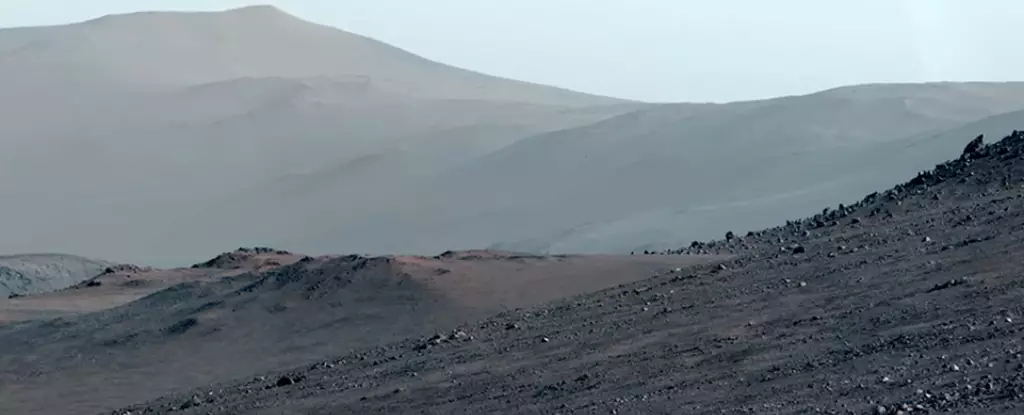In February 2021, the Perseverance rover made a historic landing in the Jezero Crater on Mars, a site chosen for its geological significance and potential for revealing the history of life on the Red Planet. The Jezero Crater, believed to be an ancient lake bed, features a delta fan, which is indicative of sediment deposition over time—a process typical on Earth in the presence of flowing water. This tantalizing connection to water, coupled with rich clay deposits, makes the crater a prime candidate for the search for biosignatures—traces of past life that may have once inhabited Mars.
Recently, NASA announced significant advancements in its mission as Perseverance successfully ascended to Lookout Hill, the highest point along the crater’s rim. This achievement marks a pivotal transition in the rover’s exploration journey, as it opens up new avenues for scientific inquiry in a region unlike any previously explored by the rover.
The Northern Rim campaign is poised to provide unprecedented geological insights. Rising approximately 500 meters from the crater floor to Lookout Hill, Perseverance’s ascent was not simply a climb but a meticulous journey filled with scientific observations and examinations. With an anticipated traverse of 6.4 kilometers, the rover is set to delve into multiple sites where geological samples can be collected, enriching our understanding of Martian history.
Ken Farley, a project scientist at Caltech, remarked on the significance of this campaign: “The Northern Rim campaign brings us completely new scientific riches as Perseverance roves into fundamentally new geology.” By transitioning from rocks that partially filled the crater’s basin to exploring materials from the Martian interior, scientists aim to study some of the oldest rocks known in the solar system. This investigation could illuminate both the early conditions on Mars and provide context for Earth’s formative years.
Perseverance’s immediate destination is Witch Hazel Hill, a rocky outcrop located 450 meters across the crater rim. This site is particularly exciting for scientists as it features over 100 meters of layered geological structures, each representing crucial chapters in the planetary history of Mars. The layers serve as a time capsule, holding clues about ancient environments and the dynamic processes that have shaped the Martian landscape.
As Perseverance begins this new phase, the mission will encounter rich textures and indicators of past conditions. Candice Bedford from Purdue University described the ascent to Witch Hazel Hill as “starting off with a bang,” emphasizing that the rover will essentially be “going back in time” as it descends. As it travels southward toward Lac de Charmes, the rover aims to explore regions that are believed to have remained relatively unaffected by meteorite impacts, thereby preserving a more accurate geological record.
The elevation gain and the rugged terrain present challenges for the Perseverance team. NASA’s rover drivers have had to pivot and adapt strategies, utilizing innovative techniques (including reverse driving) to navigate tough landscapes since the rover’s landing. The successful maneuvers underscore the advanced engineering capabilities of the team and the resilience of the rover, an embodiment of human ingenuity and exploration spirit.
This endeavor is not just about gathering samples—it’s about placing findings within the broader context of Martian geological history. The rover plans to revisit a site consisting of megabreccia, potential remnants from an ancient impact event that shaped the planet’s surface during the Noachian Period—a time marked by erosion facilitated by liquid water. Understanding these geological periods is crucial, not only for piecing together Mars’s past but for assessing the variables that could have supported life in a formerly hospitable environment.
As the exploration unfolds, the primary focus remains on uncovering biosignatures from Mars’s more temperate and wet epochs. The Perseverance mission stands at a critical juncture in the quest to grasp the potential for life beyond Earth, striving to discern whether this planet ever housed living organisms. Through systematic examination of geological formations and careful sample collection, the rover seeks to establish connections to the ancient climatic conditions that might have supported life.
The Perseverance rover’s journey at Jezero Crater is filled with promise and intrigue. Each scientific campaign not only deepens our comprehension of Mars’s past but also enhances our understanding of planetary processes that may extend to our own world. The insights gained from this monumental mission are vital as humanity expands its horizons, aspiring to unlock the mysteries of life beyond our home planet.


Leave a Reply